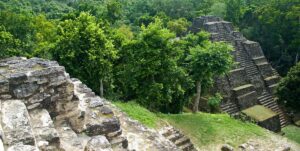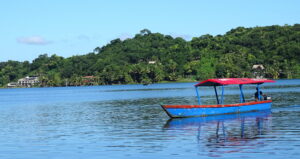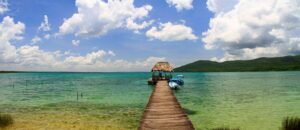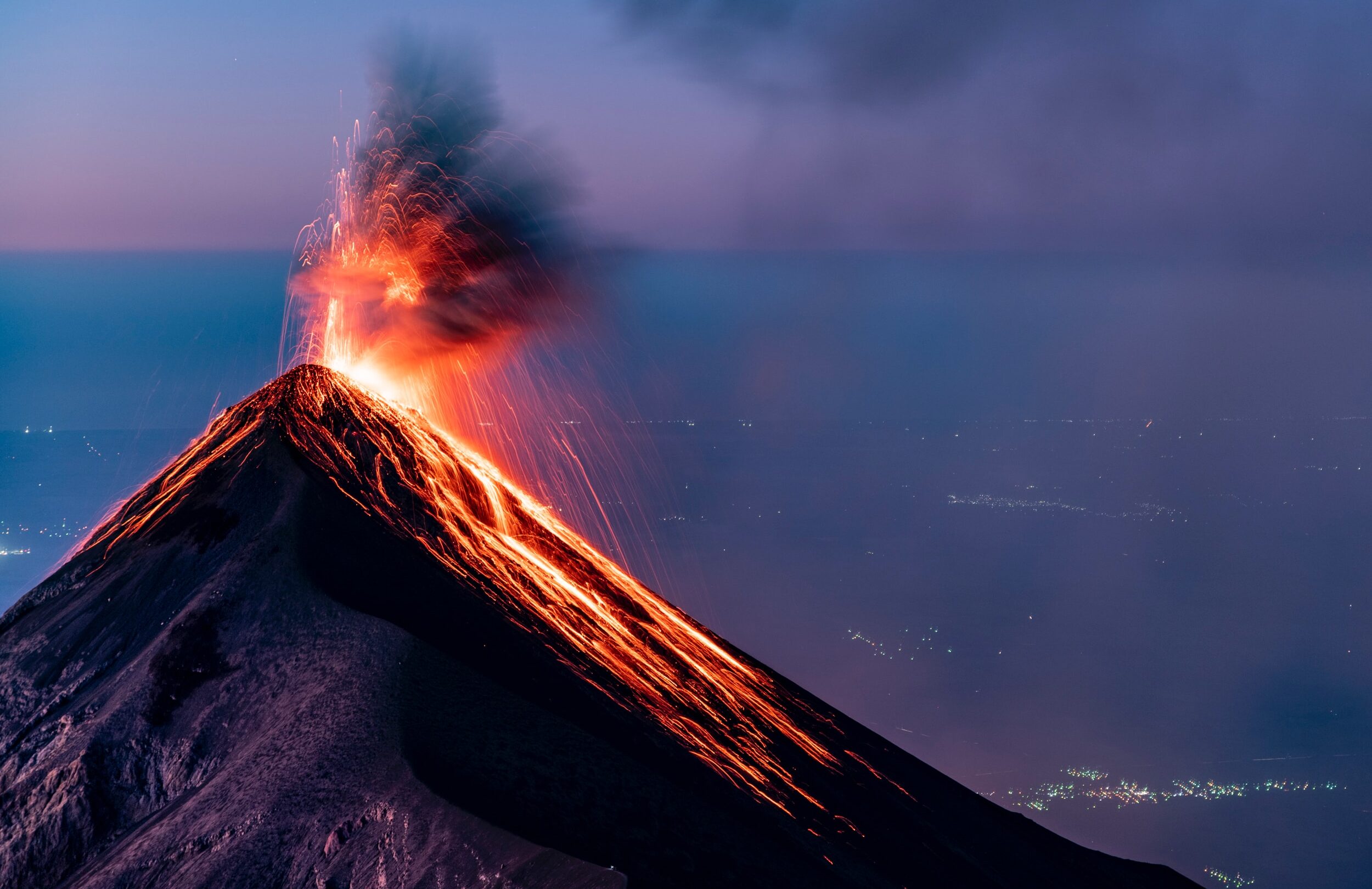
Volcán de Fuego and Volcán Acatenango: Unveiling the Fiery Connection and Mutual Influence
Nestled in the heart of Central America, Guatemala is home to some of the world’s most captivating and geologically active landscapes. Among its natural wonders, the Volcán de Fuego and Volcán Acatenango stand as prime examples of the Earth’s raw power and beauty. These two volcanoes provide an incredible window into the interconnected world of volcanic activity and geologic processes. In this blog, we will delve into the close relationship between Volcán de Fuego and Volcán Acatenango and how their dynamics influence each other.
Volcán de Fuego: The Volcano of Fire
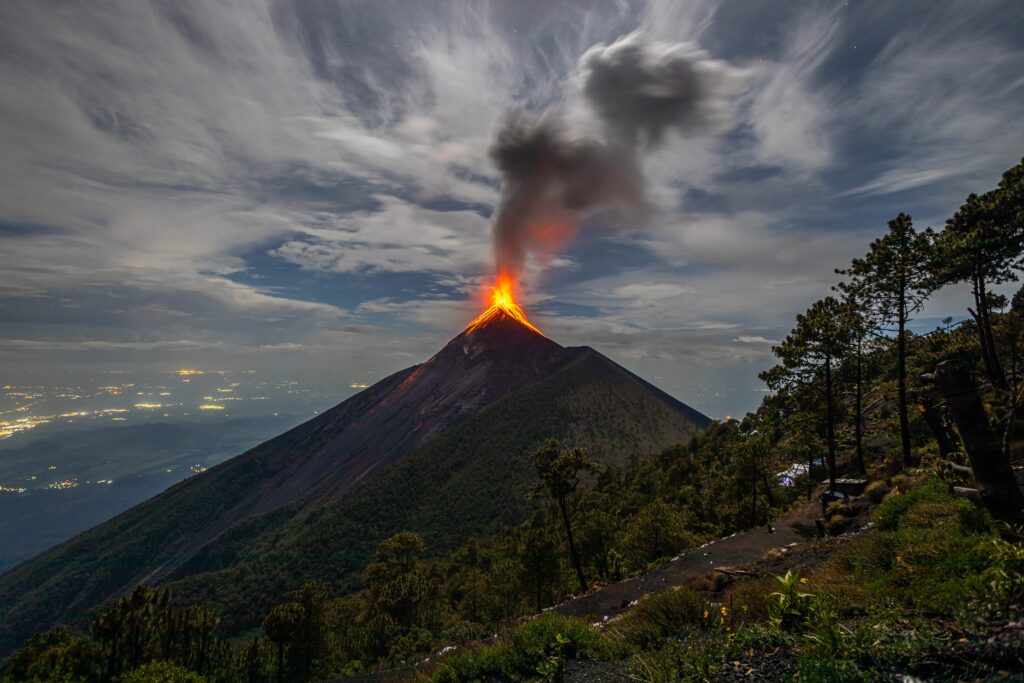
Volcán de Fuego, aptly named the “Volcano of Fire,” is one of the most active volcanoes in the Americas and the world. Rising to an impressive elevation of 3,763 meters (12,346 feet). It forms a stunning, conical silhouette against the Guatemalan skyline. Its constant activity has earned it a reputation for its dramatic eruptions and fiery displays. Often it sends ash plumes and lava cascades down its slopes.
Volcán Acatenango: Its Neighbor in Silence
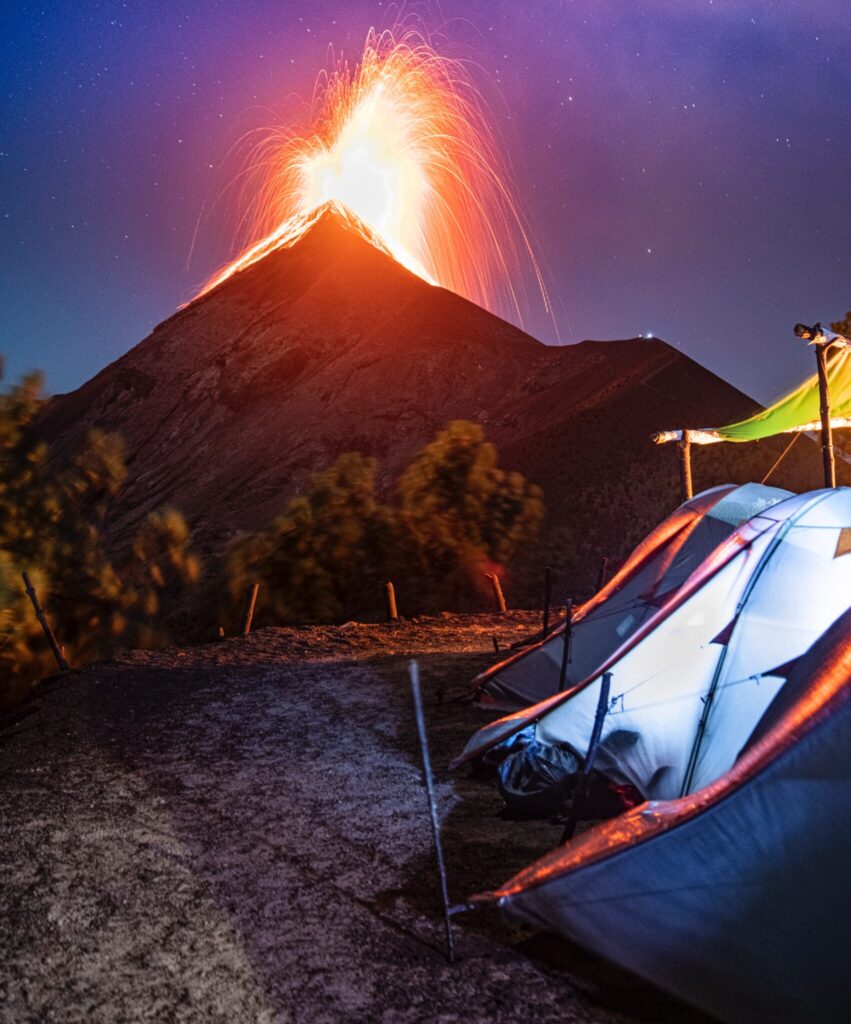
Right beside the tempestuous Volcán de Fuego stands Volcán Acatenango. A dormant stratovolcano that reaches even higher, at 3,976 meters (13,044 feet). Unlike its fiery neighbor, Acatenango has remained relatively quiet for the past century. But its history is no less fascinating. Acatenango last erupted around 1972. Its slopes are covered in lush forests, providing a stark contrast to the barren, rocky terrain of Fuego.
The Shared Geological Connection
What makes this volcanic duo so intriguing is the geological connection that lies beneath their picturesque surfaces. Both volcanoes share a common magma chamber beneath the earth’s surface. This magma chamber acts as a reservoir for molten rock and gases. It serves as the source of volcanic eruptions. As magma rises and builds pressure within this shared chamber, it can result in eruptions from either Volcán de Fuego or Volcán Acatenango, depending on various geological factors.
Influence on Each Other’s Activity
The close proximity of these two volcanoes means that their geological activity is intertwined. When one volcano experiences a significant eruption, it can influence the behavior of the other. Here’s how this dynamic interaction works:
Pressure Release:
The volcanic dynamics between Volcán de Fuego and Volcán Acatenango are a testament to the constant geological tango that unfolds beneath the surface. One of the key players in this intricate dance is the concept of pressure release.
When Volcán de Fuego erupts in all its fiery splendor, it temporarily acts as a safety valve for the shared magma chamber. These dramatic eruptions serve as a release mechanism, allowing pent-up pressure within the magma chamber to find an outlet. It reduces the immediate risk of a major eruption at Volcán Acatenango. This process can be likened to the controlled release of steam from a pressure cooker. It prevents a catastrophic explosion in the short term.
This phenomenon, while providing a sense of relief in the immediate vicinity of Volcán Acatenango, also underscores the interdependence of these volcanic neighbors. It highlights how the actions of one volcano can influence the behavior and safety of the other. It showcases the delicate balance of nature’s forces in this captivating volcanic relationship.
Shifts in Magma:
Within the enigmatic depths of the shared magma chamber, a constant symphony of change unfolds. Its effects ripple through the rocky cores of both Volcán de Fuego and Volcán Acatenango. The ever-shifting magma levels within this subterranean reservoir play a pivotal role in influencing the dynamic relationship between these neighboring volcanoes.
As magma rises or descends within the chamber, it serves as a seismic conductor. It orchestrates the geological movements below the surface. When magma surges upwards, it can lead to an increase in seismic activity, rattling the foundations of both volcanoes. This heightened seismicity, in turn, heightens the potential for eruptions, creating a tense atmosphere beneath the earth’s crust.
Conversely, when magma levels recede, the seismic activity may temporarily subside, offering a brief respite. Yet, this period of calm can be deceiving, as it often precedes a buildup of pressure that may culminate in an eruption at either Volcán de Fuego or Volcán Acatenango. It’s a reminder that the geological forces at play are not merely static but in a state of perpetual motion. Ready to unleash their power at any moment.
Lava Flow Paths:
The story of Volcán de Fuego and Volcán Acatenango wouldn’t be complete without acknowledging the profound impact of lava flow paths. An element of their dynamic interplay that extends beyond the confines of their shared magma chamber. During a major eruption of Volcán de Fuego, the torrents of lava, glowing like molten rivers, can cascade down its slopes in a fiery display of nature’s fury. While this spectacle is awe-inspiring, it carries implications that resonate far beyond the immediate vicinity of the eruption.
As the lava flows advance, they can pose a potential threat to the verdant forests and rugged slopes of Volcán Acatenango. These resilient ecosystems, thriving on the dormant volcano’s slopes, have evolved over time to adapt to the constant specter of their fiery neighbor. However, the sudden influx of searing lava can bring about significant alterations to the landscape and ecosystem dynamics of both volcanoes.
Over time, nature’s resilience shines through as new life emerges from the ashes and the rejuvenation of the ecosystem begins. However, these events underscore the ever-present influence of volcanic activity on the surrounding environment. This emphasizes the intricate relationship between these two volcanoes and the ecosystem they share.
Tourism and the Hike to Acatenango
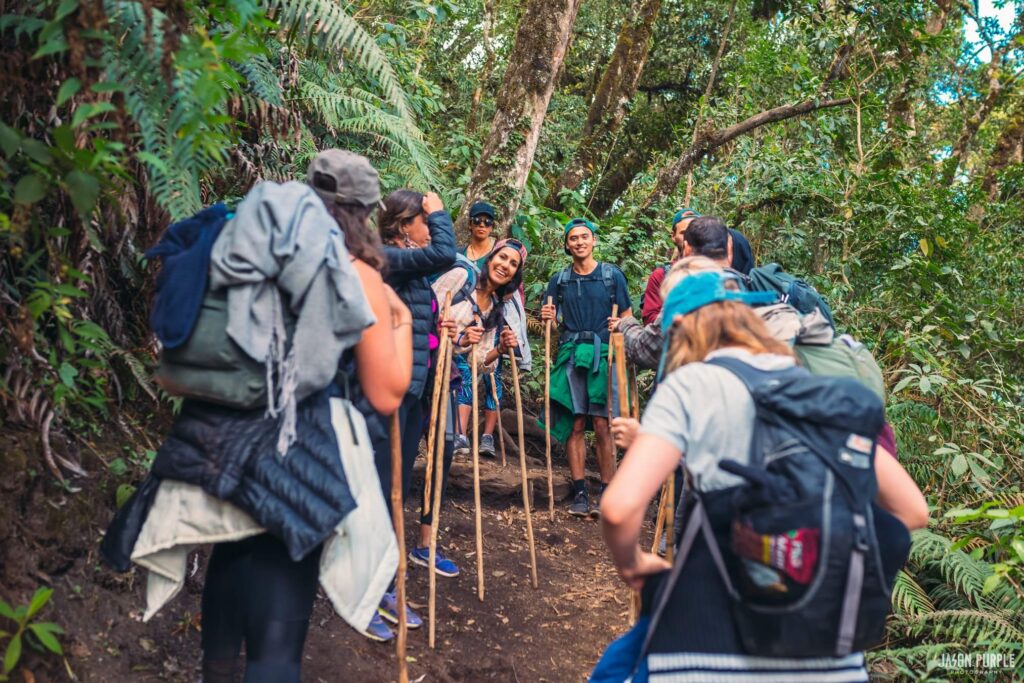
Despite the ever-present geological risks associated with their proximity, Volcán de Fuego and Volcán Acatenango have forged a unique appeal among adventure seekers and nature enthusiasts. These twin titans of volcanic activity have become more than just geological wonders. They have become iconic destinations for those seeking the thrill of exploration and the serenity of the natural world.
One of the region’s most renowned activities is the challenging hike to the summit of Volcán Acatenango. This trek offers intrepid travelers an unparalleled opportunity to witness the geological drama that unfolds between these neighboring giants. As you ascend the slopes of Acatenango, the views become increasingly breathtaking. The highlight of the journey is reaching the summit. It’s where you can witness the spectacular eruptions of Volcán de Fuego, casting fiery plumes into the night sky. It’s an experience that resonates deeply with those who undertake it, providing a profound connection with the Earth’s forces.
For those eager to embark on this unforgettable adventure, Tropicana offers volcano tours that provide a safe and guided experience. These tours are led by experienced guides who are well-versed in the region’s geological nuances. They ensure that participants can enjoy the adventure while minimizing risks. It’s an opportunity to delve into the heart of this captivating volcanic relationship. All while being surrounded by the stunning natural beauty of Guatemala’s landscapes.
Conclusion
The relationship between Volcán de Fuego and Volcán Acatenango is a testament to the complex and interconnected nature of our planet’s geology. These volcanoes, one fiery and active, the other serene and dormant, share a deep-rooted geological bond that shapes their behavior and influences the landscapes around them. While their dynamics can be unpredictable and sometimes dangerous. They also provide a unique opportunity for us to study the Earth’s inner workings and appreciate the raw beauty of our planet’s volcanic wonders. As we continue to explore and understand this relationship, we gain insights into the fascinating world of geology and the awe-inspiring forces that shape our world.


 Previous Post
Previous Post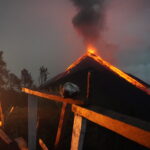 Next Post
Next Post